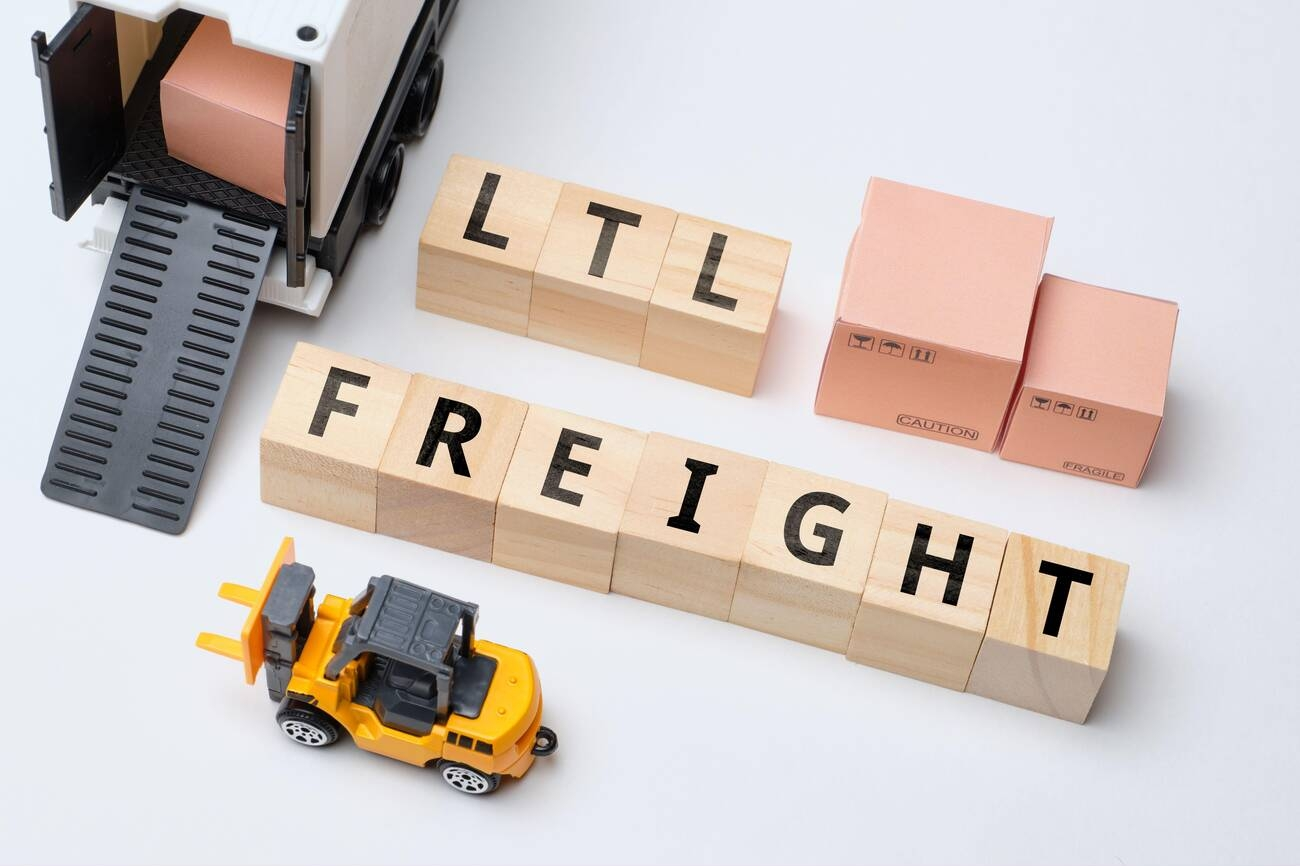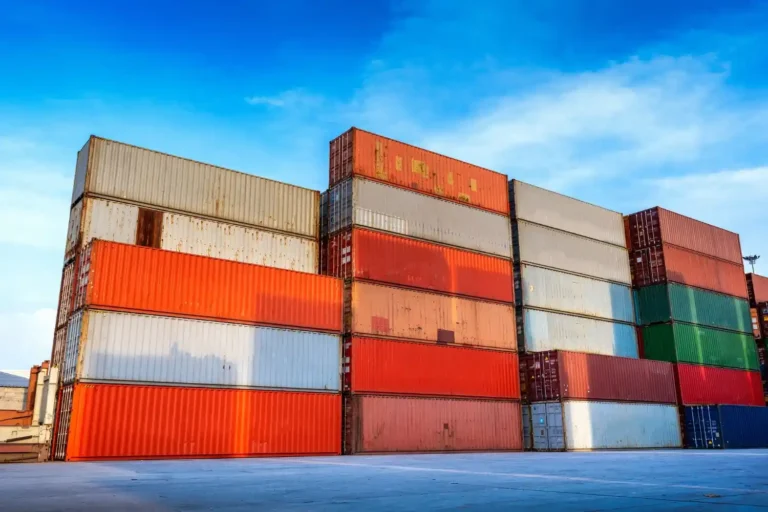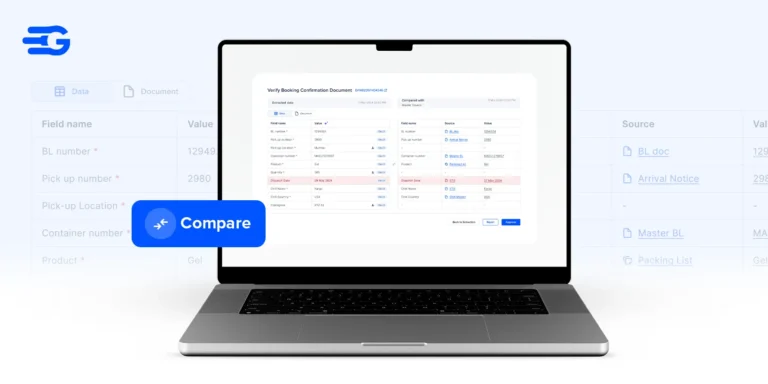What is LTL Shipping and How Does it Work?
A common challenge faced by businesses involves navigating the logistics of transporting products that fall between the dimensions suitable for parcel services and those requiring a dedicated truck. That’s where LTL shipping comes in. LTL stands for Less Than Truckload, and it’s a cost-effective solution for transporting smaller shipments that don’t require a dedicated container.
Understanding LTL Freight
Think of the shipping container as a large semi-truck with a spacious trailer. In Full Truckload (FTL) shipping, a single company rents the entire trailer for their goods. But what if your shipment only occupies a fraction of that space? That’s where LTL comes in. Less Than Truckload (LTL) freight is a practical solution for companies with shipments that don’t fill an entire truck. LTL carriers consolidate goods from multiple shippers onto a single truck, optimising space and cost distribution. LTL is particularly advantageous for shipments ranging from 150 to 15,000 pounds, offering a cost-effective alternative for smaller loads compared to FTL.
How LTL Freight Shipping Works
LTL shipping involves a coordinated network of terminals, trucks, and logistics providers. A simplified overview of the process looks something like this:
- You make the booking by providing details about your shipment, including weight, dimensions, and origin/destination.
- The carrier calculates your shipping cost and gives you a quote based on various factors like weight, distance, and accessorial charges.
- The LTL carrier picks up your shipment and others’ within a particular area.
- Your shipment is transported to a terminal, where it’s consolidated with other LTL shipments heading in the same direction.
- The consolidated shipment travels through a network of terminals, potentially being loaded and unloaded onto different trucks for optimal efficiency.
- Your shipment arrives at the final destination and is delivered according to your specifications.
Benefits of using LTL Freight Shipping
Reducing Shipping Costs with LTL
In LTL shipping the container load consists of many smaller shipments that fill the entire container. And since your shipment is not utilising the entire container, you only need to pay for the amount of space used. Hence, lowering the cost of shipping. Because of the shared resources strategy used by LTL shipping, operating costs are pooled by a number of shippers, and carriers frequently offer adjustable price structures depending on distance and weight, enabling customised expenditure.
Enhanced Security Measures in LTL Shipping
Enhanced security measures are inherent in LTL shipping, with the power of palletization playing a crucial role. By securely fastening individual boxes to a sturdy pallet, shipments become more manageable, less prone to damage, and offer a smaller footprint, reducing the risk of theft.
Special Service Options in LTL
Beyond simple transportation, LTL shipping provides a range of value-added services to meet special requirements. It includes help with liftgates for large machines, temperature-controlled choices for delicate goods, and accelerated shipment for deliveries that must be made on time. In addition to this, LTL carriers fulfil unique demands such as liftgates for an effective shipping load or residential pick-ups and deliveries. Expedited services are offered for items that need to arrive sooner than the typical transit period. Liftgates are used for shipments weighing more than 100 pounds when the receiving site lacks a dock. Deliveries to places where LTL carriers are not permitted access, such as building sites, camps, remote areas, etc., require limited access services. Additionally, interior delivery and pickup services are offered in cases where the carrier must enter the building to retrieve freight or to deliver.
Also Read: What is Drayage?
Differences between LTL and FTL Shipping
For small business shipping, truckload and less-than-truckload are both great choices. Less than truckload (LTL) shipping is the transportation of goods that doesn’t take up the entire truckload, while full truckload (FTL) shipments occupy the entire space or its weight limit of the container.
When to Choose LTL over FTL
Choosing between FTL and LTL shipping can be a strategic decision for businesses, impacting both cost and efficiency. And the Ideal Shipment Characteristics for LTL shipping would be:
- Weight: If your freight falls within the range of 150 to 15,000 pounds. This sweet spot maximises the cost-effectiveness of LTL compared to FTL options.
- Bulk and Palletization: If you’re shipping large, bulky items or palletized/crated goods. These naturally lend themselves to efficient consolidation within an LTL truckload.
- Partial Truckload Usage: If your shipment doesn’t require the entire container space. Sharing the space with other shipments in LTL brings significant cost savings compared to paying for an empty portion of an FTL trailer.
- Residential Deliveries: If you need residential pickup or delivery. FTL services often incur additional charges for residential locations, while LTL providers are more equipped to handle these deliveries efficiently.
- Liftgate Requirements: If your pickup or delivery location requires a liftgate for loading/unloading. While both LTL and FTL can offer liftgate services, LTL providers may have them readily available at a more competitive price point.
- Flexible Timeframes: If you have no urgent time constraints for shipping. While LTL can be slightly slower than dedicated FTL, the cost savings often outweigh the time difference, especially for non-time-sensitive shipments.
- Cost-Consciousness: If you prioritise the most affordable freight rates. LTL shines in this aspect, offering significant cost savings compared to FTL for smaller shipments by sharing the trailer space and operational costs.
Analysing Cost-Effectiveness: LTL vs. FTL
The primary advantage of LTL shipping lies in its pay-per-space model, allowing you to pay only for the portion of the truckload your shipment occupies. This stands in contrast to FTL, where the entire truckload cost is incurred, even if it’s not fully utilised. Think about shipping a few pallets of products; there is a lot of space lost and money wasted while using FTL. Conversely, LTL effectively fills the truckload by grouping shipments together, which results in reasonable cost-sharing and significant savings, particularly for smaller shipments.
When compared to dedicated FTL, LTL shipping’s consolidation technique may lengthen the total delivery time, but for organisations handling non-time-critical goods, the substantial cost reductions frequently offset this difference. Making an informed choice between LTL and FTL requires careful evaluation of shipment size, weight, specialised requirements, and budget concerns. When cost-effectiveness is your top priority and using a whole trailer isn’t necessary for your consignment, LTL is a wise decision for maximising transportation expenses.
Choosing the Right LTL Carrier
Choosing the best LTL (Less Than Truckload) carrier is a strategic decision that affects your efficiency, budget, and, ultimately, your customers’ pleasure in the ever-changing world of freight shipping. Choosing among the many LTL companies fighting for your business can be difficult. Do not be alarmed! This book gives you the information and resources you need to make a wise choice.
Factors to Consider when Choosing an LTL Carrier
Finding the right carrier for your LTL shipping needs might seem a taxing chore. The following exhaustive list of factors will help you make the right choice for your shipping needs.
Scope and Coverage: Does the carrier operate within your shipping lanes? Assess their regional and national coverage to ensure they can seamlessly handle your routes.
Service Offerings: Beyond basic transportation, explore their value-added services like liftgate delivery, inside pickup/delivery, and temperature-controlled options. Ensure they align with your specific shipment needs.
Reputation and Reliability: Research the carrier’s track record for on-time deliveries, claim resolution, and customer service. Online reviews and industry reports can provide valuable insights.
Technology and Tracking: In today’s digital age, real-time shipment tracking is crucial. Opt for carriers offering user-friendly online platforms or mobile apps for transparent visibility throughout the journey.
Pricing and Transparency: Get quotes from multiple carriers and compare their pricing structures carefully. Consider not just the base rate, but also potential accessorial charges and fuel surcharges. Look for transparent pricing breakdowns to avoid hidden costs.
Communication and Support: Assess the carrier’s communication channels and responsiveness. Opt for carriers with dedicated customer support teams readily available to address your queries and concerns.
Safety and Security: Understand the carrier’s safety measures and insurance policies to ensure your valuable cargo is protected throughout the transit.
Sustainability: For environmentally conscious businesses, consider the carrier’s commitment to sustainability practices, such as fuel-efficient fleets and carbon reduction initiatives.
Comparing LTL Shipping Rates
The major LTL shipping carriers in 2024 include ABF Freight System, SAIA Inc., Estes, Express Lines, Central Transport, Old Dominion Freight Line, AAA Cooper Transportation, Averitt Express, Dayton Freight Lines, XPO Logistics, and Southeastern Freight Lines.
In order to compare LTL shipping rates across different carriers and getting the best quote requires some prep work. First, find out your freight’s NMFC classification code. Then proceed to get an LTL rate quote from the carrier based on your route, weight, and dimensions. For heavier shipments (4,000-44,000 lbs.), explore volume service discounts from carriers.
Frequent shippers using multiple carriers can save time by comparing quotes on GoProcure by GoComet. GoComet simplifies the process by gathering quotes from top-rated carriers in one place. Simply enter your shipment details and instantly compare rates across different destinations.
Understanding Bill of Lading in LTL Shipping
A bill of lading (BOL) is a vital document that carries more significance than its mere physical form in the complex realm of less-than-truckload (LTL) shipping. It guarantees the seamless movement of your items from point of origin to point of destination by acting as a legal contract, a receipt, and an essential communication tool.
Preparing Accurate LTL Shipping Documents
When preparing LTL shipping documents, meticulous attention to detail is crucial before your shipment begins its journey. Accuracy is paramount, and it’s essential to ensure that all information on the Bill of Lading (BOL), such as origin, destination, shipment details, weight, and dimensions, is not only correct but also clearly legible. Mistakes in these details can result in delays, additional costs, and potential cargo holds.
Additionally, it’s important to familiarise yourself with common shipping terms like FOB (Free on Board) and EXW (Ex Works) to understand your responsibilities and accurately reflect them on the BOL. Multiple copies of the BOL should be prepared – typically one for the shipper, carrier, and consignee (receiver). Extra copies may be required for customs clearance or other purposes. Moreover, consider exploring the possibilities of electronic BOLs (eBOLs) offered by many carriers. These electronic alternatives provide convenience, faster processing, and a reduced risk of errors, streamlining the documentation process for efficient and accurate LTL shipments.
The Role of Bill of Lading in LTL Freight
The Bill of Lading (BOL) is more than just a paper document; it has several uses in the goods transportation industry. It is essentially a contract that specifies the terms and circumstances of transportation, including important information about prices, obligations, and responsibilities, and is signed by the shipper and the carrier. The BOL, which is a legally binding document, creates the guidelines that direct the whole shipping procedure and promotes mutual understanding and clarity amongst the parties.
Also read- Know what is bill of lading?
Moreover, the BOL serves as more than just a tool for keeping records. The carrier assumes responsibility for guaranteeing the safe and secure delivery of the goods when they sign the BOL, indicating that they have received your shipment and accepting it as proof of acceptance. Beyond this, the BOL may serve as a document of title, subject to the conditions that have been agreed upon. Its endorsement and transfer give a level of legal formality to the transaction and make it easier for the ownership of the items to transfer smoothly upon delivery. Furthermore, real-time tracking of shipment progress is made possible by the BOL’s interaction with carriers’ tracking systems, providing transparency and insights into the flow of products. Lastly, in the unfortunate event of damage, loss, or delays, the BOL serves as a critical piece of evidence for claims and dispute resolution, providing a structured foundation for addressing and resolving issues that may arise during the transportation process.
Managing LTL Shipping Costs
Even while LTL shipping provides affordable options for smaller freight shipments, managing its complexities can still be expensive. But being able to maximise cost savings could make a lot of difference when it comes to achieving your business goals.
Optimising Transit Time with LTL Freight
While LTL shipping offers cost-effective solutions for smaller freight shipments, managing its intricacies can present budgetary challenges. To strike a balance between speed and cost, consider strategic planning such as consolidation. Combining smaller shipments into larger, consolidated loads can unlock significant cost savings. Pooling resources with other businesses sharing similar routes maximises trailer space and minimises individual costs. Additionally, explore expedited LTL services when time is of the essence. Though slightly more expensive than standard options, they can help meet critical deadlines and avoid potential inventory disruptions. Shipping on weekends or off-peak hours is another consideration, as carriers often offer discounted rates during these periods.
Pickup and Delivery Procedures for LTL Shipments
Efficient pickup and delivery processes are essential to reveal hidden cost savings.
- Ensure your shipment is ready for pickup when the carrier arrives to avoid additional charges due to delays.
- Palletizing goods whenever possible is a strategic move, facilitating easier handling, reducing potential damage, and potentially qualifying for lower rates offered by some carriers for palletized shipments.
- When dealing with locations lacking loading docks, factor in liftgate usage costs, and explore alternative solutions like ground-level loading/unloading to avoid additional charges.
- Consider flexible delivery options, such as “liftgate at shipper’s location, dock delivery at consignee’s location,” which can sometimes be more cost-effective than full liftgate service at both ends.
Integrating LTL Freight in Supply Chain Management
Regardless of an organization’s size, the smooth management of supply chain components is critical to its success in today’s complex global economic environment. Leveraging supply chain management systems ensures efficient coordination of these components, including key logistical options like LTL (less-than-truckload) shipping. These systems streamline operations by optimizing transportation processes, such as LTL shipping, which serves as a vital link in the supply chain for efficiently meeting the transportation needs of products that don’t require a full truckload.
Utilising LTL Freight for Specific Shipping Needs
LTL shipping isn’t a one-size-fits-all solution, but rather a versatile tool catering to diverse needs. It proves to be a cost-effective solution for smaller shipments that fall below the threshold for a full truckload, efficiently maximising trailer space through the consolidation of loads travelling similar routes. LTL is especially helpful for just-in-time inventory management because it makes it easier to send smaller, more frequent shipments, which fits in perfectly with inventory management strategies that put efficiency first and cut down on storage expenses. Furthermore, LTL makes it possible for enterprises to reach customers or niche markets that require smaller deliveries without having to deal with a lot of logistical hassles. Additionally, LTL carriers frequently offer specialty services, such liftgate deliveries or temperature-controlled environments, which fulfil specific handling requirements and cater to a variety of commodities, making LTL shipping more appealing to enterprises with a range of cargo demands.
Benefits of Partnering with LTL Freight Carriers
Integrating LTL shipping into your supply chain by partnering with LTL freight carriers provides several advantages:
Cost Savings: Compared to dedicated FTL (Full Truckload) shipping, LTL offers significant cost advantages by sharing trailer space and operational costs with other shippers.
Increased Flexibility: LTL shipping provides greater flexibility in shipment frequency and size, adapting to fluctuating demand and diverse needs.
Network Reach: LTL shipping carriers boast extensive networks across regions and even countries, ensuring wider reach and efficient delivery to various destinations.
Technology and Tracking: Many LTL providers offer real-time shipment tracking tools and online platforms, enhancing transparency and visibility throughout the shipping journey.
Scalability: LTL scales seamlessly with your business needs, readily accommodating growth or fluctuations in shipment volume.
Challenges and Solutions in LTL Freight Shipping Services
While LTL shipping offers numerous advantages for businesses of all sizes, navigating its intricacies can present its own set of challenges. It’s essential to have the knowledge of the challenges and understand the tactics to overcome common hurdles to ensure a smooth journey for your goods.
Addressing Capacity Constraints in LTL Shipping
LTL shipping boasts flexibility and cost-effectiveness for smaller freight, but peak seasons and booming economies can create a frustrating obstacle of capacity constraints. With limited trucks and drivers struggling to keep up with demand, securing space for your shipment can feel like mission impossible. Finding available capacity, especially during peak seasons, can be a daunting task. Here are strategies that can help you fight this challenge:
- Plan Ahead: Book your shipments well in advance, particularly during high-demand periods. Early planning secures your spot and avoids potential delays or rate increases.
- Flexible Routing: Consider alternative routes or carriers. While your preferred route might be booked, exploring other options can increase your chances of securing capacity.
- Consolidate Shipments: When possible, combine smaller shipments into larger loads to maximise trailer space and potentially qualify for better rates, even during tight capacity periods.
- Leverage Technology: Utilise online platforms and tools that connect shippers with carriers in real-time, providing better visibility into available capacity and allowing you to quickly secure suitable options.
- Build Relationships: Develop strong relationships with reliable LTL carriers. Consistent business can incentivize them to prioritise your shipments, even during peak seasons.
Managing Freight Density in LTL Shipments
While LTL shipping offers attractive rates, freight density – the weight-to-volume ratio of your shipment – significantly impacts your final cost. Why? Because carriers charge not just for the weight of your goods, but also for the space they occupy. This means shipping “air” within your packaging translates to higher costs. Here are some tips on how you can optimise freight density:
Precise Measurements: Ensure accurate measurements of your shipment’s weight and dimensions. Inaccurate information can lead to miscalculations, impacting costs and potentially causing delays.
Palletization Power: Palletize your goods whenever possible. Palletized shipments occupy less space, maximising density and potentially qualifying you for lower rates offered by some carriers for denser loads.
Packing Efficiency: Optimise your packing methods to fill boxes or containers efficiently, minimising wasted space and maximising density within your chosen packaging.
Negotiate Density-Based Rates: Some carriers offer flexible pricing based on density. Explore negotiating rates based on actual density instead of estimated weight, potentially leading to cost savings.
Enhancing Efficiency through LTL Freight Services
In the current dynamic business environment, operational effectiveness is critical. Less-Than-Truckload, or LTL, freight services are frequently disregarded but can be an effective tool for supply chain optimisation and logistics optimisation.
Leveraging Technology for LTL Freight Optimization
LTL shipping has been transformed by technology, which now provides effective methods to increase efficiency:
Real-time tracking: Keep an eye on your shipments to learn important details about their whereabouts, anticipated arrival schedules, and any delays. Proactive planning and well-informed decision-making are made possible by this transparency.
Platforms for comparing quotes online: By comparing prices and services offered by several LTL carriers in one location, you may select the most economical and effective solution for your particular requirements.
Document management that is automated: Use electronic bills of lading and other digital documents to replace paper-based processes, which will save time and cut down on errors.
Tools for optimising routes: Use software to determine the most efficient routes, possibly cutting down on transit times and fuel expenses. The software examines shipment details and road conditions.
Managing Last-Mile Delivery Challenges
Last-mile delivery can be a costly and time-consuming bottleneck. LTL offers strategies to overcome these challenges:
Consolidation hubs: For more effective distribution, especially in metropolitan areas, use consolidation hubs that are placed strategically to aggregate smaller shipments into bigger cargoes.
Options for timing delivery: Investigate flexible delivery choices, such as deliveries on weekends or during off-peak hours, to perhaps avoid traffic jams and speed up last-mile procedures.
Collaboration with local carriers: Work together with local carriers who specialise in particular routes, taking advantage of their infrastructure and local knowledge to ensure effective last-mile delivery.
Solutions based on technology: To ensure efficient and timely deliveries, use delivery management solutions to track drivers, optimise routes, and communicate efficiently with recipients.
Conclusion
LTL shipping emerges as a powerful tool for enhancing operational efficiency and streamlining your logistics. Its cost-effectiveness for smaller shipments combined with the flexibility to adapt to diverse needs makes it a valuable asset for businesses of all sizes.
By understanding the intricacies of LTL, you can make use of its full potential. Embrace technology to optimise routes, track shipments in real-time, and manage documentation efficiently. Partner with reliable LTL carriers and explore strategies like consolidation hubs and flexible delivery options to conquer last-mile delivery challenges.
Remember, careful planning, strategic decision-making, and leveraging available resources are key to maximising the benefits of LTL shipping and achieving a smooth, efficient, and cost-effective supply chain. So, explore the possibilities of LTL shipping and unlock its potential to optimise your operations and propel your business forward.






